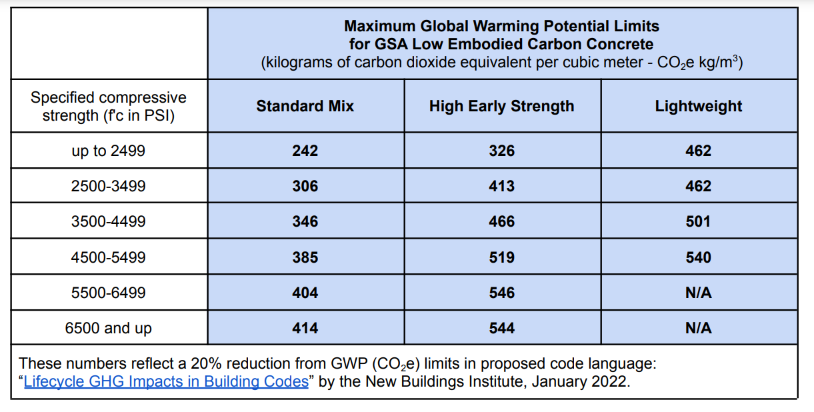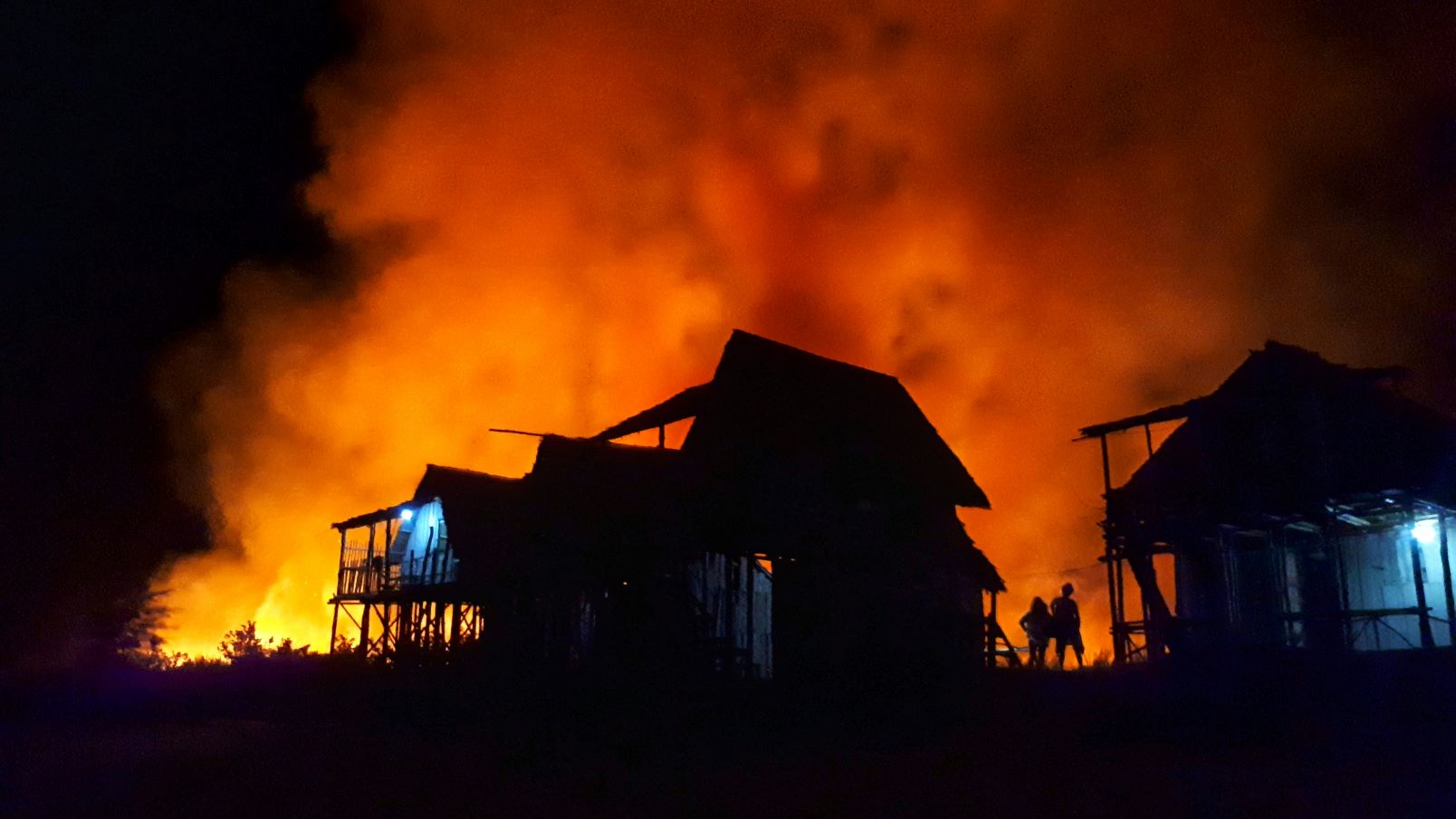General Services Administration Issues Specs for New Low Carbon Building




From: National Ready Mixed Concrete Association
The General Services Administration (GSA) has issued new standards for reducing the carbon footprint of the buildings and infrastructure projects it builds, including a new energy efficiency standard and Low Embodied Carbon Concrete Standards.
These standards are in alignment with the Architecture 2030 Challenge which sets targets for reducing operational emissions of building projects and embodied carbon emissions of building products.
The NRMCA signed on to the challenge in 2012 and has since been working to measure progress toward meeting the challenge for products. Since establishing a benchmark for carbon emissions of concrete in 2014, NRMCA members have demonstrated a 21% reduction in embodied carbon emissions.
The new concrete standard specifies maximum Global Warming Potential (GWP) for common specified compressive strengths. The targets are generally higher than the industry average benchmarks published by NRMCA.


Producers must demonstrate compliance with the standard using product-specific Environmental Product Declarations (EPDs) published in compliance with the North American PCR for Concrete.
The concrete industry leads the way in environmental transparency with over 35,000 product-specific EPDs and was one of the first industries to publish an Industry-wide EPD and regional benchmarks. The NRMCA is also an EPD Program Operator to help members publish product-specific EPDs.
NRMCA consulted with GSA during the specification development process, including encouraging NRMCA members to respond to a GSA survey which indicates that over 80% of the concrete manufacturers reported are already producing or supplying low embodied carbon material.
Over 60% said they have developed a product-specific EPD and over 55% said that their low embodied carbon concrete costs about the same as conventional equivalents.
See also NRMCA Publication 2PE004‐21c “Guide to Improving Specifications for Ready Mixed Concrete with Notes on Reducing Embodied Carbon Footprint“
Visit www.nrmca.org/sustainability for more detail or contact Katie Poss at kposs@nrmca.org.
Recent Posts
Future of Modular Construction Using Concrete and Masonry
These factors collectively position modular construction as a key player in shaping the future landscape…
The Future of Cement as a Sustainable and Resilient Building Product
The future of cement shaping up to forge a more sustainable construction industry that meets…
The Growing Importance of Resiliency in the Design and Construction of Buildings
Resiliency is becoming increasingly important in building design and construction due to the rising frequency…
GCCA Global Low Carbon Ratings for Cement and Concrete
The Global Cement and Concrete Association (GCCA) has developed a standardised low carbon rating system…
Building for Resiliency with Insulated Concrete Forms
Building with Insulated Concrete Forms (ICFs) is increasingly recognized as a critical component of modern…
Building Resiliency in the Pacific Northwest
In the Pacific Northwest, the increasing frequency and severity of climate-related disasters, such as wildfires,…


